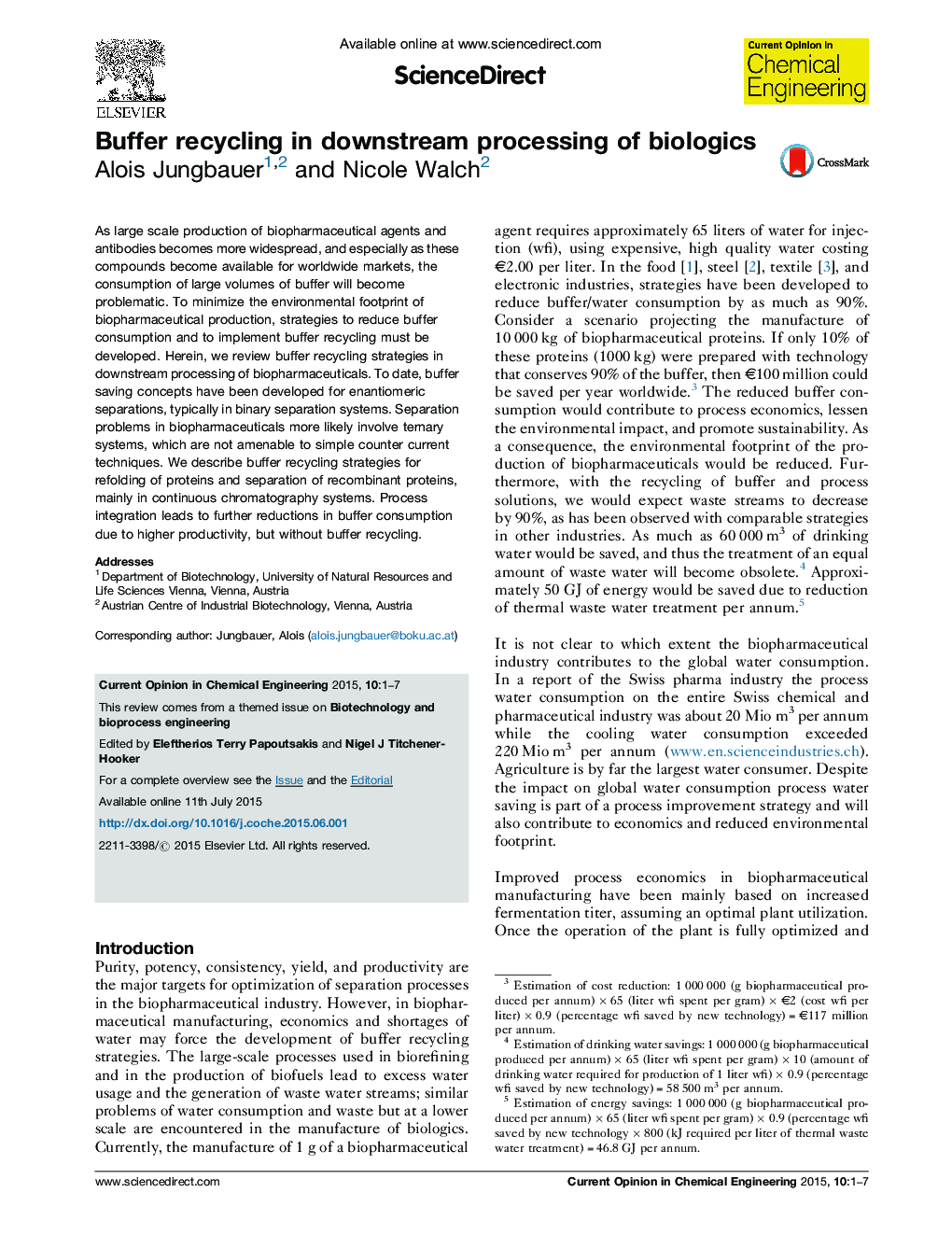| کد مقاله | کد نشریه | سال انتشار | مقاله انگلیسی | نسخه تمام متن |
|---|---|---|---|---|
| 174400 | 458881 | 2015 | 7 صفحه PDF | دانلود رایگان |
• Buffer recycling strategies in bioprocessing have been explored in the past.
• Up 99% buffer can be saved by continuous refolding with buffer recycling.
• Continuous integrated manufacturing will be the next step to implement buffer recycling in industry.
As large scale production of biopharmaceutical agents and antibodies becomes more widespread, and especially as these compounds become available for worldwide markets, the consumption of large volumes of buffer will become problematic. To minimize the environmental footprint of biopharmaceutical production, strategies to reduce buffer consumption and to implement buffer recycling must be developed. Herein, we review buffer recycling strategies in downstream processing of biopharmaceuticals. To date, buffer saving concepts have been developed for enantiomeric separations, typically in binary separation systems. Separation problems in biopharmaceuticals more likely involve ternary systems, which are not amenable to simple counter current techniques. We describe buffer recycling strategies for refolding of proteins and separation of recombinant proteins, mainly in continuous chromatography systems. Process integration leads to further reductions in buffer consumption due to higher productivity, but without buffer recycling.
Journal: Current Opinion in Chemical Engineering - Volume 10, November 2015, Pages 1–7
